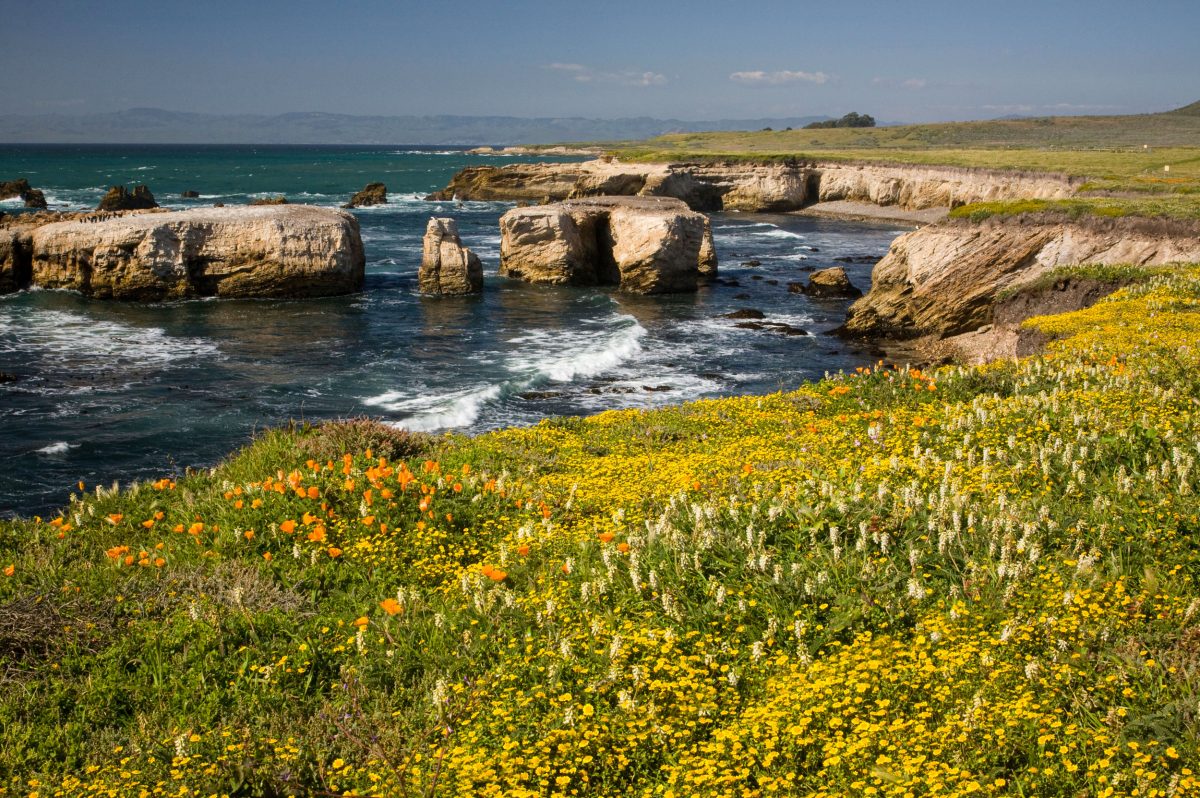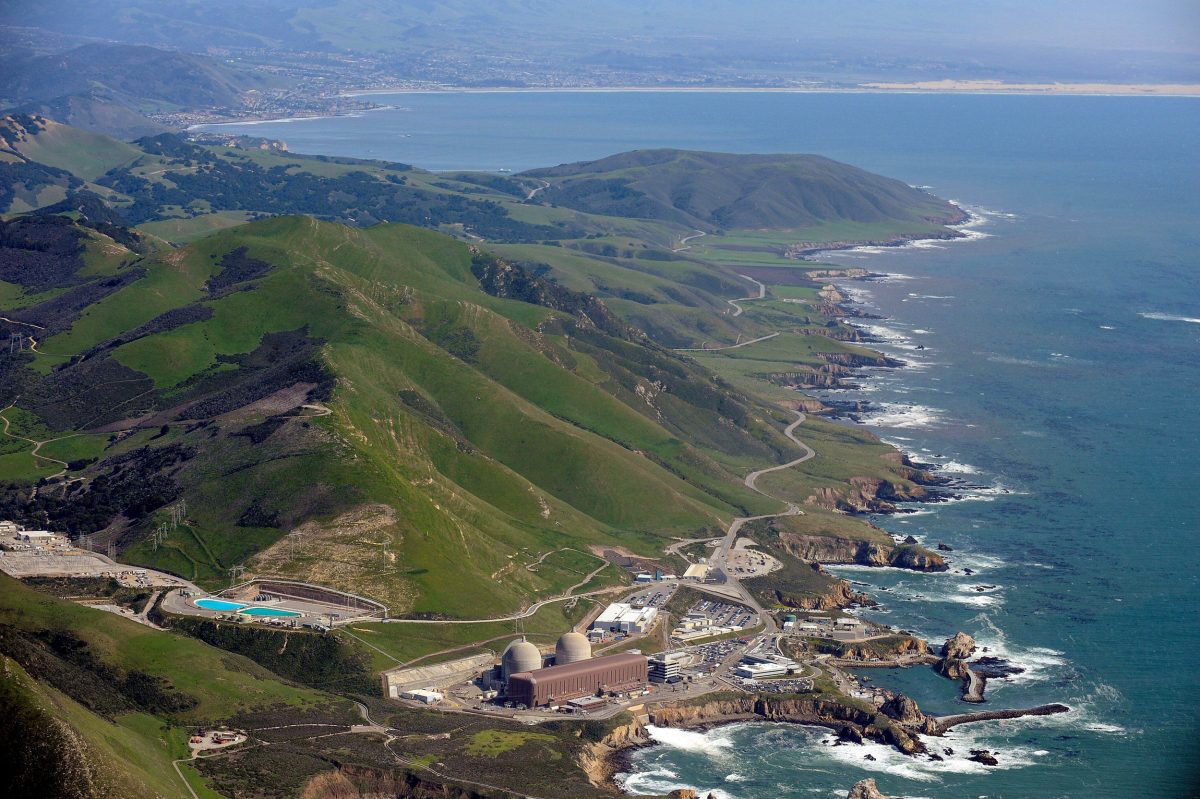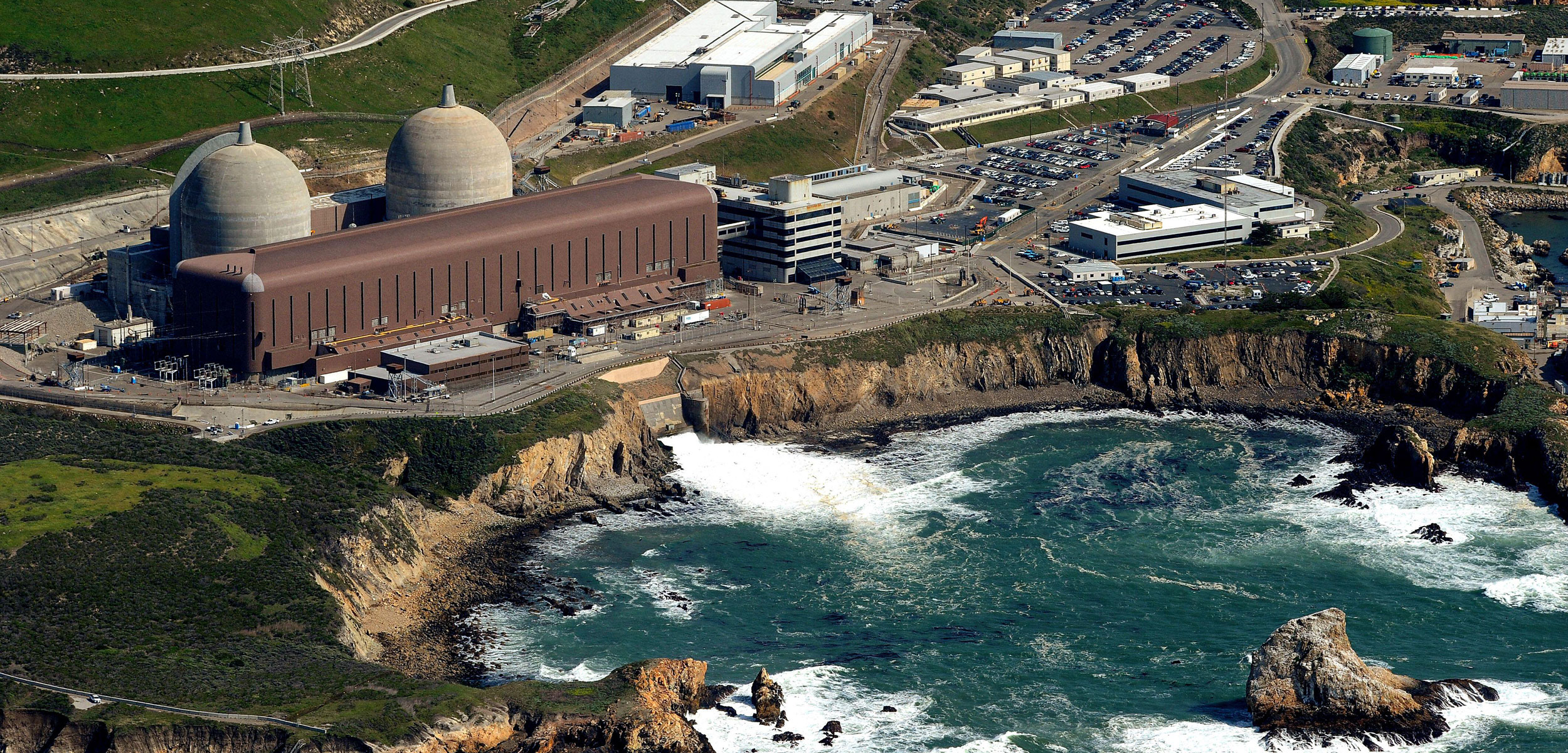Returning Diablo Canyon Lands to Indigenous Hands
The Yak Titʸu Titʸu Yak Tiłhini in California have requested the return of their coastal homelands, currently occupied by a nuclear power plant.
Article body copy
This article was originally published in High Country News, a magazine about the American West’s environment and communities. Read more stories like this at hcn.org.
The Diablo Canyon power plant stands at the edge of the continent, above cliffs that plunge into the Pacific Ocean near Avila Beach, California. A turbulent saltwater discharge flows from the nuclear plant and is lost in the foam of waves pushed in by the wind and tides. The pumping and heating of the ocean water kills fish and other marine life, and yet much of the area remains ecologically robust: sea otters still clasp hands among kelp beds, oystercatchers nest on the rocky shore, and sea lions chase down herring and rockfish. Badgers and coyotes den in the hills of coastal chaparral while gray whales pass close to shore on their annual migrations. The only piece that’s missing is the coast’s first people, the Yak Titʸu Titʸu Yak Tiłhini—and they are determined to return.
The tribe descends from the villages of the Diablo Canyon lands and the Pecho Coast—including territory currently owned by Pacific Gas and Electric Company (PG&E) and used for its power plant.
“When we talk about Diablo lands, we’re really talking about our home,” says tribal chairwoman Mona Tucker. “Not just our homeland, but our home where our grandparents’ grandparents are from.”
The Yak Titʸu Titʸu Yak Tiłhini, also known as the Northern Chumash, sent a letter last month to California governor Gavin Newsom requesting the return of the Diablo Canyon lands. The tribe believes this is the moment for California to make amends for a long slate of historical wrongs, including the loss of their land.
Newsom apologized to Indigenous Californians in 2019 and has proposed a budget of US $100-million to assist tribes with buying back land. Newsom’s administration also created a tribal land transfer policy that requires investor-owned utilities like PG&E to identify which tribes originally lived on or adjacent to that land before any attempts are made to sell or otherwise dispose of the property. They are “expected to negotiate a transfer to the tribe before putting the land on the market.”
Newsom’s office did not respond to request for comment, but Tucker says that the governor has been receptive and willing to listen to the tribe’s position. She notes that the tribe’s goals for the land are consistent with Newsom’s conservation goals and that the Northern Chumash have a memorandum of understanding with the Land Conservancy of San Luis Obispo County to develop conservation easements and ensure public access. Tribal members intend to spearhead the effort to conserve the land and waters their ancestors shaped and cared for and hope to set an example for others.

The rugged coastline currently on the property of the Pacific Gas and Electric Company (PG&E), which runs the Diablo Canyon power plant near Avila Beach, California, has been part of the traditional territory of the Yak Titʸu Titʸu Yak Tiłhini for more than 10,000 years. Photo by Spring Images/Alamy Stock Photo
Tucker’s great-grandmother, Rosario Cooper, was the last known Tiłhini language speaker. In the early 1910s, Cooper worked with ethnographer J. P. Harrington to preserve her knowledge of the language, songs, stories, and lives of the Yak Titʸu Titʸu Yak Tiłhini. In her notes, Cooper mentioned the villages and families of the Pecho Coast, including several in the Diablo Canyon area. One of the villages she identified, Tstyiwi, has been the focus of historic preservation in a collaborative project between the Yak Titʸu Titʸu Yak Tiłhini, California Polytechnic State University, and PG&E. In 2018, the project was among the California Governor’s Historic Preservation Award recipients.
Tstyiwi and villages like it are built upon middens—mounds of shells, bones, tools, and other pieces of peoples’ lives. A village sits upon its midden like a coral polyp atop a reef—both built upon the foundations of their ancestors. The middens at Diablo Canyon affirm that the Yak Titʸu Titʸu Yak Tiłhini have been present here for more than 10,000 years, going back to the rising of the oceans and birth of the coastline as it’s seen today.
The arrival of Spanish missionaries in the late 18th century upended the lives of Indigenous people in California, bringing coerced conversion, forced labor, disease, and genocide. Later, during the Ranchero or Spanish land grant period, survivors endured the fragmentation of their homelands when the Spanish—and later Mexican—governments seized huge areas of Indigenous land and gave it to Spanish and Mexican settlers. The Diablo Canyon lands and villages were taken without the consent of the Yak Titʸu Titʸu Yak Tiłhini and became the Rancheros Pecho y Islay and San Miguelito. The United States annexed California from Mexico in 1848, when Cooper was three years old, and these rancheros were sold and broken into smaller parcels of private property.
In the 1960s and 1970s, PG&E bought the Diablo Canyon lands intending to build a nuclear power plant. Its construction was controversial from the beginning, and the power plant became a center of antinuclear protest and civil disobedience. Those protests primarily focused on the environmental impacts and risks associated with nuclear energy. The Yak Titʸu Titʸu Yak Tiłhini, however, also had to face the destruction of a historic village site. Tucker says cultural artifacts likely still exist beneath the plant and the surrounding buildings.

Although PG&E planned to decommission the Diablo Canyon plant by 2025, nuclear power advocates say that it is a low-carbon alternative to fossil fuel use. Regardless, the Yak Titʸu Titʸu Yak Tiłhini are asking for a say in the use and ownership of the land under and around the plant. Photo by Lionel Hahn/Abaca Press/Alamy Stock Photo
In 2016, PG&E announced that it planned to decommission the plant by 2025. The Yak Titʸu Titʸu Yak Tiłhini sought to participate in the decommissioning process to ensure that cultural resources were properly preserved and that the land was returned to them. PG&E began discussions with the tribe, but then the decommissioning process stalled out.
Nuclear advocates have championed Diablo Canyon as a low-carbon alternative to fossil fuels, particularly given current worries about the reliability of California’s electrical grid. The California Legislature responded by passing Senate Bill 846, which extends the life of the reactors for another five years—though the bill does acknowledge tribal interests in the land and recommends that PG&E and state agencies “consult and work collaboratively with local California Native American tribes.”
Tucker says that the plant’s operating status does not change the tribe’s position that the land needs to be returned. She points out that the plant’s industrial footprint occupies only 40 hectares out of a total of 4,856 hectares, and says the process of reclaiming that land can begin now.
“We are a small tribe with a big vision, and we’re relentless,” Tucker says. “We are the best people to protect this.”

